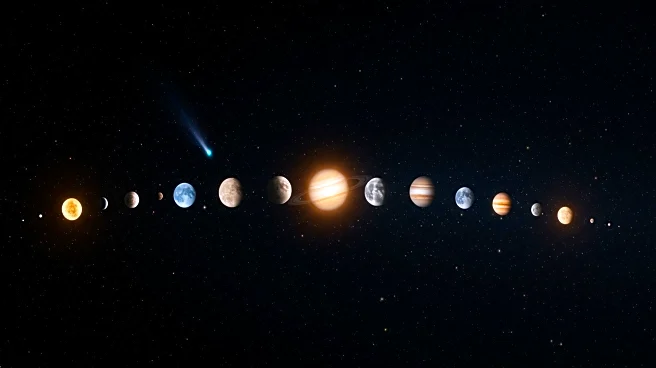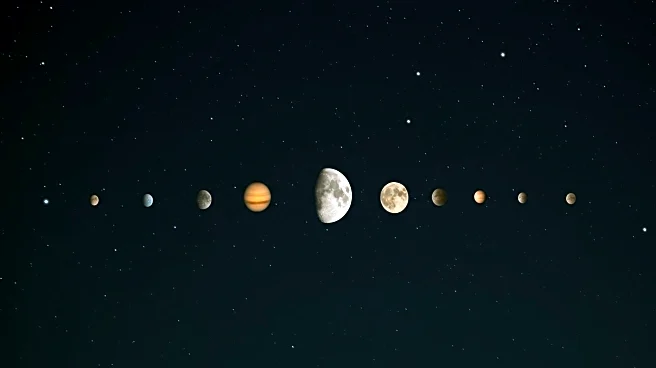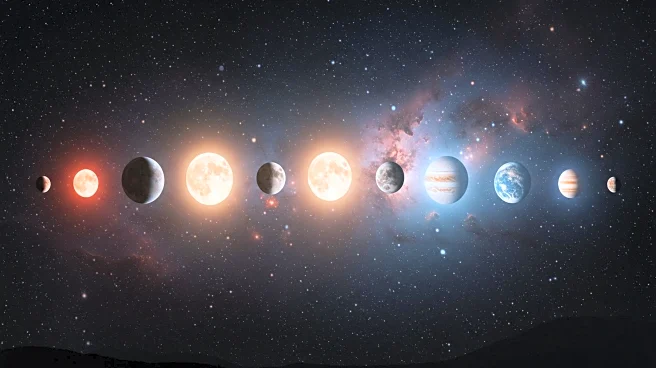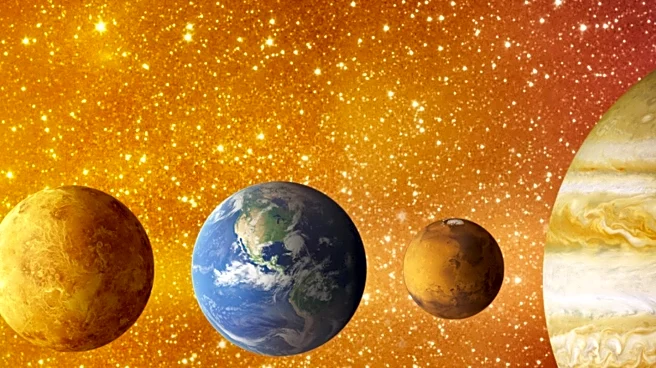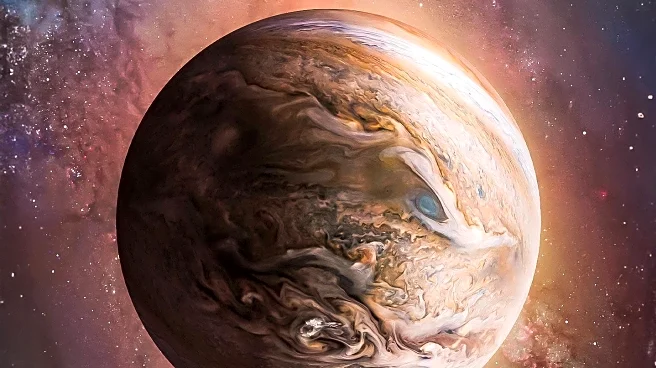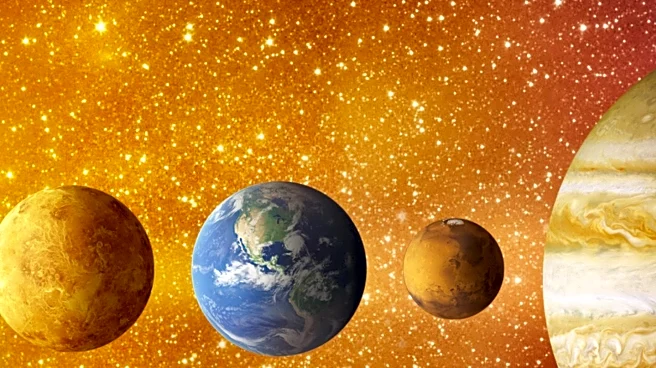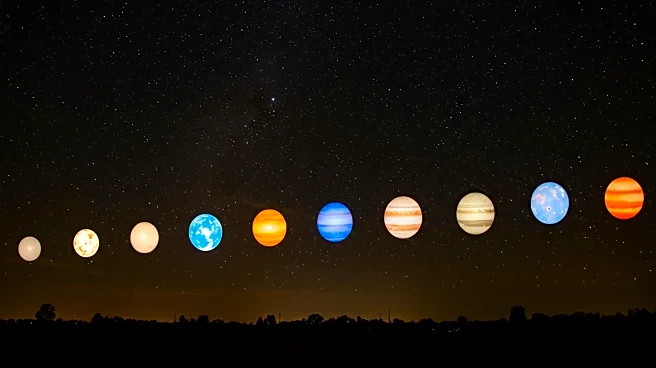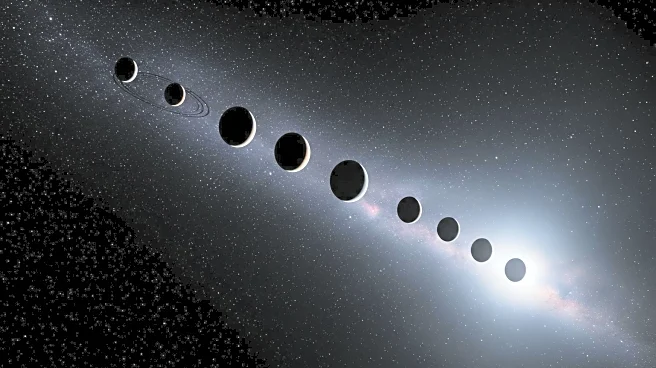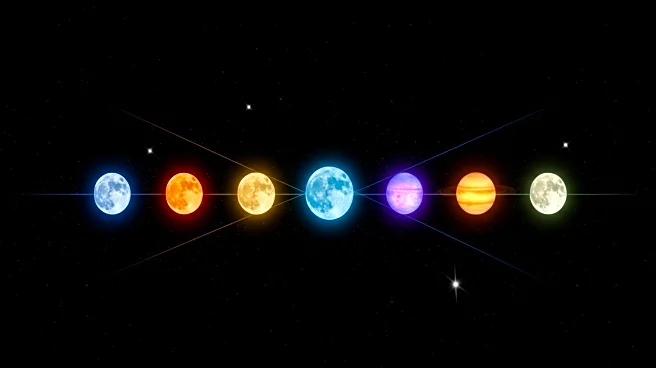What's Happening?
This week, the Moon is passing through Gemini, aligning with several planets visible in the predawn sky. Key astronomical events include the stationary point of dwarf planet Ceres on August 15, transitioning from eastward to westward motion. A Last Quarter Moon occurred on August 16, with Uranus visible near the Pleiades star cluster. On August 18/19, Titan's shadow transited Saturn, with several of Saturn's moons visible. Mercury reached its greatest western elongation on August 19. From August 19-21, Venus, Jupiter, and the Moon were visible near Gemini, offering opportunities to observe Jupiter's Galilean moons and Mercury near the Beehive Cluster. Comet C/2024 E1 (Wierzchoś) was observable in Hercules on August 22.
Why It's Important?
These celestial events provide significant opportunities for astronomers and enthusiasts to observe rare planetary alignments and comet visibility. The visibility of Comet Wierzchoś, as it brightens, offers a unique chance for observation and study, contributing to our understanding of cometary behavior and solar system dynamics. The alignment of planets and the transit of Titan's shadow across Saturn are notable for their rarity and the insights they offer into planetary motion and gravitational interactions. These events can inspire public interest in astronomy and science education, fostering a deeper appreciation for celestial phenomena.
What's Next?
As Comet Wierzchoś continues to brighten, it will become more accessible for observation with smaller telescopes, reaching 11th magnitude in September and 9th magnitude in late October. The ongoing visibility of planetary alignments will continue to offer opportunities for observation and study. Astronomers and enthusiasts may plan further observations and educational events to capitalize on these celestial occurrences. The next Titan shadow transit will include Titan itself transiting Saturn, providing another opportunity for observation.
Beyond the Headlines
The visibility of Comet Wierzchoś and the planetary alignments highlight the dynamic nature of our solar system, offering insights into the gravitational interactions and orbital mechanics that govern celestial bodies. These events underscore the importance of continued investment in astronomical research and technology, which can lead to discoveries about the origins and evolution of the solar system. The cultural and educational impact of these events can also foster a greater public interest in science and exploration.
